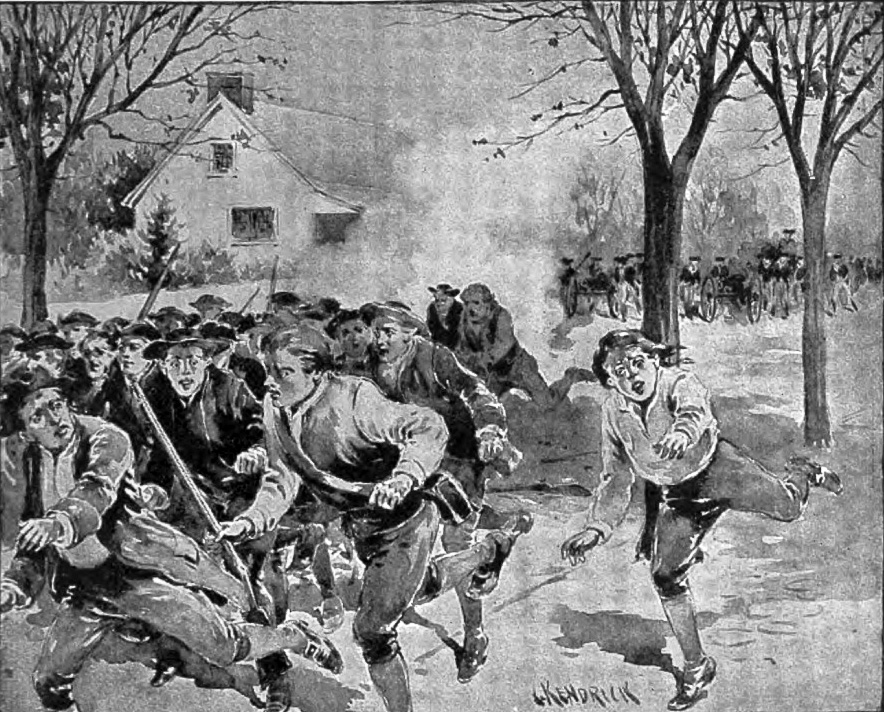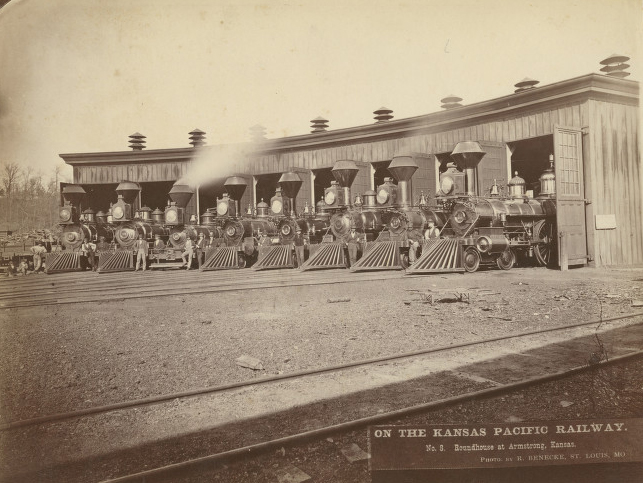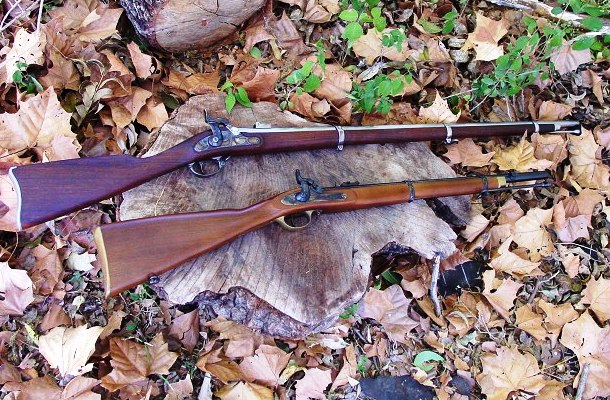|
.50-70 Government
The .50-70 Government (also called the .50-70 Musket and .50 Government) is a black powder cartridge adopted in 1866 for the Springfield Model 1866 trapdoor rifle. Description Derived from the .50-60-400 Joslyn, the cartridge was developed after the unsatisfactory results of the .58 rimfire cartridge for the Springfield Model 1865 rifle. The .50-70 Government cartridge became the official cartridge of the U.S. military until replaced by the .45-70 Government in 1873. The .50-70 cartridge has a pressure limit of 22,500 PSI. The official designation of this cartridge at the time of introduction was "US center-fire metallic cartridge", and the commercial designation ''.50-70-450'', standing for : *Caliber: .50 *Powder charge: black powder *Bullet weight: The U.S. Navy purchased Remington Rolling Block rifles chambered for the .50-70 cartridge. The U.S. Navy also contracted with Remington to produce several thousand rolling-block carbines chambered for a reduced load ... [...More Info...] [...Related Items...] OR: [Wikipedia] [Google] [Baidu] |
Gunpowder
Gunpowder, also commonly known as black powder to distinguish it from modern smokeless powder, is the earliest known chemical explosive. It consists of a mixture of sulfur, carbon (in the form of charcoal) and potassium nitrate ( saltpeter). The sulfur and carbon act as fuels while the saltpeter is an oxidizer. Gunpowder has been widely used as a propellant in firearms, artillery, rocketry, and pyrotechnics, including use as a blasting agent for explosives in quarrying, mining, building pipelines and road building. Gunpowder is classified as a low explosive because of its relatively slow decomposition rate and consequently low brisance. Low explosives deflagrate (i.e., burn at subsonic speeds), whereas high explosives detonate, producing a supersonic shockwave. Ignition of gunpowder packed behind a projectile generates enough pressure to force the shot from the muzzle at high speed, but usually not enough force to rupture the gun barrel. It thus makes a good propellant ... [...More Info...] [...Related Items...] OR: [Wikipedia] [Google] [Baidu] |
Springfield Armory
The Springfield Armory, more formally known as the United States Armory and Arsenal at Springfield located in the city of Springfield, Massachusetts, was the primary center for the manufacture of United States military firearms from 1777 until its closing in 1968. It was the first federal armory and one of the first factories in the United States dedicated to the manufacture of weapons. The site is preserved as the Springfield Armory National Historic Site, Western Massachusetts' only unit of the national park system. It features the world's largest collection of historic American firearms. Famous first as the United States' primary arsenal during the American Revolutionary War, and then as the scene of a confrontation during Shays' Rebellion, the Springfield Armory in the 19th and 20th centuries became the site of numerous technological innovations of global importance, including interchangeable parts, the assembly line style of mass production, and modern business practices, ... [...More Info...] [...Related Items...] OR: [Wikipedia] [Google] [Baidu] |
Philip Sheridan
General of the Army Philip Henry Sheridan (March 6, 1831 – August 5, 1888) was a career United States Army officer and a Union general in the American Civil War. His career was noted for his rapid rise to major general and his close association with General-in-chief Ulysses S. Grant, who transferred Sheridan from command of an infantry division in the Western Theater to lead the Cavalry Corps of the Army of the Potomac in the East. In 1864, he defeated Confederate forces under General Jubal Early in the Shenandoah Valley and his destruction of the economic infrastructure of the Valley, called "The Burning" by residents, was one of the first uses of scorched-earth tactics in the war. In 1865, his cavalry pursued Gen. Robert E. Lee and was instrumental in forcing his surrender at Appomattox Courthouse. Sheridan fought in later years in the Indian Wars of the Great Plains. Both as a soldier and private citizen, he was instrumental in the development and protection ... [...More Info...] [...Related Items...] OR: [Wikipedia] [Google] [Baidu] |
Battle Of The Little Bighorn
The Battle of the Little Bighorn, known to the Lakota and other Plains Indians as the Battle of the Greasy Grass, and also commonly referred to as Custer's Last Stand, was an armed engagement between combined forces of the Lakota Sioux, Northern Cheyenne, and Arapaho tribes and the 7th Cavalry Regiment of the United States Army. The battle, which resulted in the defeat of U.S. forces, was the most significant action of the Great Sioux War of 1876. It took place on June 25–26, 1876, along the Little Bighorn River in the Crow Indian Reservation in southeastern Montana Territory. Most battles in the Great Sioux War, including the Battle of the Little Bighorn (14 on the map to the right), "were on lands those Indians had taken from other tribes since 1851". The Lakotas were there without consent from the local Crow tribe, which had treaty on the area. Already in 1873, Crow chief Blackfoot had called for U.S. military actions against the Indian intruders. The steady Lakota ... [...More Info...] [...Related Items...] OR: [Wikipedia] [Google] [Baidu] |
George Armstrong Custer
George Armstrong Custer (December 5, 1839 – June 25, 1876) was a United States Army officer and cavalry commander in the American Civil War and the American Indian Wars. Custer graduated from West Point in 1861 at the bottom of his class, but as the Civil War was just starting, trained officers were in immediate demand. He worked closely with General George B. McClellan and the future General Alfred Pleasonton, both of whom recognized his qualities as a cavalry leader, and he was promoted to brigadier general of volunteers at age 23. Only a few days after his promotion, he fought at the Battle of Gettysburg, where he commanded the Michigan Cavalry Brigade and despite being outnumbered, defeated J. E. B. Stuart's attack at what is now known as the East Cavalry Field. In 1864, he served in the Overland Campaign and in Philip Sheridan's army in the Shenandoah Valley, defeating Jubal Early at Cedar Creek. His division blocked the Army of Northern Virginia's final retreat an ... [...More Info...] [...Related Items...] OR: [Wikipedia] [Google] [Baidu] |
Kansas Pacific Railway
The Kansas Pacific Railway (KP) was a historic railroad company that operated in the western United States in the late 19th century. It was a federally chartered railroad, backed with government land grants. At a time when the first transcontinental railroad was being constructed by the Central Pacific and the Union Pacific, it tried and failed to join the transcontinental ranks. It was originally the "Union Pacific, Eastern Division", although it was completely independent. The Pennsylvania Railroad, working with Missouri financiers, designed it as a feeder line to the transcontinental system. The owners lobbied heavily in Washington for money to build a railroad from Kansas City to Colorado, and then to California. It failed to get funding to go west of Colorado. It operated many of the first long-distance lines in the state of Kansas in the 1870s, extending the national railway network westward across that state and into Colorado. Its main line furnished a principal transport ... [...More Info...] [...Related Items...] OR: [Wikipedia] [Google] [Baidu] |
Buffalo Bill
William Frederick Cody (February 26, 1846January 10, 1917), known as "Buffalo Bill", was an American soldier, Bison hunting, bison hunter, and showman. He was born in Le Claire, Iowa, Le Claire, Iowa Territory (now the U.S. state of Iowa), but he lived for several years in his father's hometown in modern-day Mississauga, Ontario, Canada, before the family returned to the Midwest and settled in the Kansas Territory. Buffalo Bill started working at the age of eleven, after his father's death, and became a rider for the Pony Express at age 15. During the American Civil War, he served the Union from 1863 to the end of the war in 1865. Later he served as a civilian scout for the United States Army, U.S. Army during the Indian Wars, receiving the Medal of Honor in 1872. One of the most famous and well-known figures of the American Old West, Buffalo Bill's legend began to spread when he was only 23. Shortly thereafter he started performing in Wild West show, shows that displayed cowb ... [...More Info...] [...Related Items...] OR: [Wikipedia] [Google] [Baidu] |
United States Army Indian Scouts
Native Americans have made up an integral part of U.S. military conflicts since America's beginning. Colonists recruited Indian allies during such instances as the Pequot War from 1634–1638, the Revolutionary War, as well as in War of 1812. Native Americans also fought on both sides during the American Civil War, as well as military missions abroad including the most notable, the Codetalkers who served in World War II. The Scouts were active in the American West in the late 19th and early 20th centuries. Including those who accompanied General John J. Pershing in 1916 on his expedition to Mexico in pursuit of Pancho Villa. Indian Scouts were officially deactivated in 1947 when their last member retired from the Army at Fort Huachuca, Arizona. For many Indians it was an important form of interaction with White American culture and their first major encounter with the Whites' way of thinking and doing things.Dunlay, Thomas W. Wolves for the blue soldiers: Indian scouts and auxi ... [...More Info...] [...Related Items...] OR: [Wikipedia] [Google] [Baidu] |
Military Surplus
Military surplus are goods, usually matériel, that are sold or otherwise disposed of when held in excess or are no longer needed by the military. Entrepreneurs often buy these goods and resell them at surplus stores. Usually the goods sold by the military are clothing, equipment, and tools of a nature that is generally useful to the civilian population, as well as embroidered patches, name tags, and other items that can be used for a faux military uniform. Occasionally, vehicles (jeeps, trucks, etc.) will be sold as well. Some military surplus dealers also sell military surplus firearms, spare parts, and ammunition alongside surplus uniforms and equipment. Demand for such items comes from various collectors, outdoorsmen, adventurers, hunters, survivalists, and players of airsoft and paintball, as well as others seeking high quality, sturdy, military issue garb. The goods may be used, or not. Some merchants of surplus goods also sell goods that are privately manufactured in ... [...More Info...] [...Related Items...] OR: [Wikipedia] [Google] [Baidu] |
Springfield Model 1863
The Springfield Model 1863 was a .58 caliber rifled musket manufactured by the Springfield Armory and independent contractors between 1863 and 1865. The Model 1863 was only a minor improvement over the Springfield Model 1861. As such, it is sometimes classified as just a variant of the Model 1861. The Model 1861, with all of its variants, was the most commonly used longarm in the American Civil War, with over 700,000 manufactured. The Model 1863 also has the distinction of being the last muzzle-loading longarm produced by the Springfield Armory. The Model 1863 was produced in two variants. The Type I eliminated the band springs and replaced the flat barrel bands with oval clamping bands. It also featured a new ramrod, a case-hardened lock, a new hammer, and a redesigned bolster (percussion chamber). Several of these modifications were based upon Colt's contract Model 1861, known as the "Colt special". 273,265 Type I variants were manufactured in 1863. The Type II is someti ... [...More Info...] [...Related Items...] OR: [Wikipedia] [Google] [Baidu] |
Cavalry
Historically, cavalry (from the French word ''cavalerie'', itself derived from "cheval" meaning "horse") are soldiers or warriors who fight mounted on horseback. Cavalry were the most mobile of the combat arms, operating as light cavalry in the roles of reconnaissance, screening, and skirmishing in many armies, or as heavy cavalry for decisive shock attacks in other armies. An individual soldier in the cavalry is known by a number of designations depending on era and tactics, such as cavalryman, horseman, trooper, cataphract, knight, hussar, uhlan, mamluk, cuirassier, lancer, dragoon, or horse archer. The designation of ''cavalry'' was not usually given to any military forces that used other animals for mounts, such as camels or elephants. Infantry who moved on horseback, but dismounted to fight on foot, were known in the early 17th to the early 18th century as '' dragoons'', a class of mounted infantry which in most armies later evolved into standard cavalry while ret ... [...More Info...] [...Related Items...] OR: [Wikipedia] [Google] [Baidu] |
Sharps Rifle Manufacturing Company
Sharps Rifle Manufacturing Company was the manufacturer of the Sharps Rifle. The company was organized by Samuel Robbins and Richard S. Lawrence as a holding company in Hartford, Connecticut, on October 9, 1851 with $100,000 in capital. Despite Sharps departing from the company bearing his name, Sharps Rifle Manufacturing Company produced over 100,000 rifles, but it dissolved in 1881 with the widespread use of repeating rifles. History Christian Sharps (1810–1874), patented his rifle in 1848. The first contract for 5,000 rifles was in 1850 and manufacturing started in 1851. The Model 1851 "box-lock" was developed by Christian Sharps, Rollin White, and Richard Lawrence at Robbins & Lawrence of Windsor, Vermont. The second contract for 15,000 rifles was so large that no suitable land was available in Windsor, Vermont. The holding company advanced Robbins & Lawrence $40,000 to purchase of land in Hartford, Connecticut, and to erect a brick factory building. Christian Sharp ... [...More Info...] [...Related Items...] OR: [Wikipedia] [Google] [Baidu] |



.jpg)







